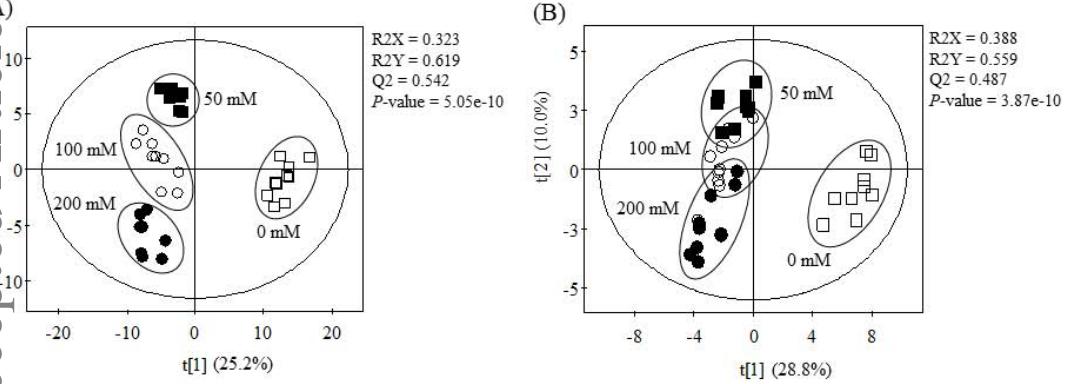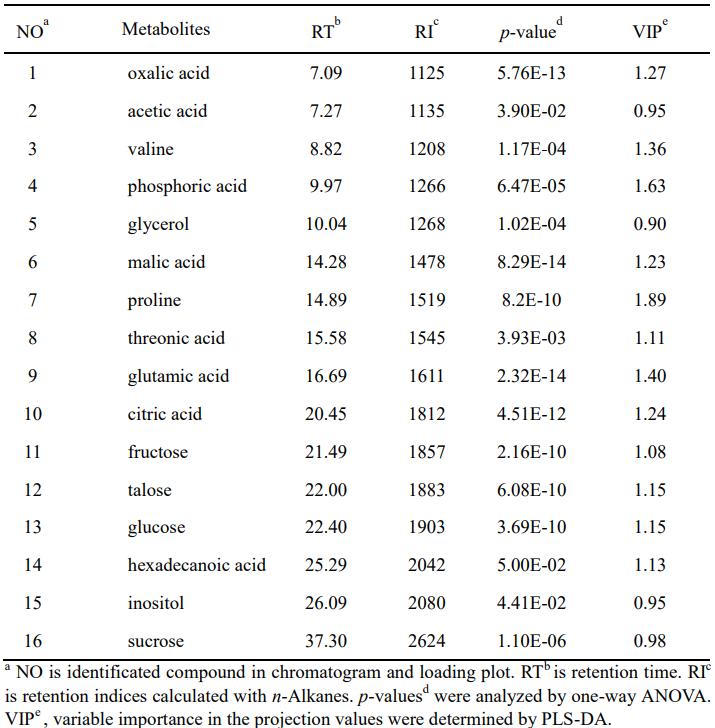What is Spinacia oleracea (Spinach)?
Spinacia oleracea, or spinach, is a cool-season leafy green that boasts a rich nutrient profile. With origins in Persia, spinach has become a global dietary phenomenon. Its leaves are a powerhouse of essential vitamins (A, C, K, and folate), minerals (iron, calcium, and magnesium), and antioxidants. The combination of these elements makes Spinacia oleracea a valuable addition to a balanced diet, promoting overall health and well-being.
The metabolism of Spinacia oleracea is a complex network of biochemical reactions that govern the synthesis and breakdown of various compounds within the plant. Understanding the metabolic pathways in spinach is crucial for unraveling its nutritional content, flavor profile, and potential health benefits.
Key Metabolic Processes in Spinach:
- Photosynthesis: Spinach, like other green plants, undergoes photosynthesis to convert sunlight into energy. This process produces glucose, the primary building block for various metabolites.
- Secondary Metabolite Synthesis: Spinacia oleracea is known for producing secondary metabolites, such as flavonoids and carotenoids, through intricate biosynthetic pathways. These compounds contribute to the plant's color, flavor, and antioxidant properties.
- Nitrogen Metabolism: Spinach efficiently utilizes nitrogen from the soil for the synthesis of amino acids, proteins, and chlorophyll. Nitrogen metabolism is crucial for the plant's growth and development.
- Carbohydrate Metabolism: The breakdown of carbohydrates in spinach yields energy for various cellular processes. Starch, a storage form of glucose, plays a significant role in carbohydrate metabolism.
Creative Proteomics, with its extensive expertise in biological analysis, offers a specialized service focused on deciphering the metabolomics of Spinacia oleracea. This comprehensive analysis provides insights into the abundance, diversity, and dynamics of metabolites within spinach.
Spinacia oleracea Metabolomics Analysis Projects in Creative Proteomics
Nutritional Profiling: Conduct an exhaustive Spinacia oleracea metabolomics analysis to identify and quantify essential nutrients, unraveling the nutritional essence of spinach. Informing nutritional guidelines and product development for enhanced health benefits.
- Comprehensive Metabolite Identification: Utilize advanced mass spectrometry techniques for a thorough identification of diverse metabolites.
- Pathway Analysis: Map out metabolic pathways governing nutrient synthesis and breakdown in Spinacia oleracea.
- Quantitative Analysis: Provide precise quantification of vital nutrients, including vitamins, minerals, and antioxidants.
Probing Bioactive Compounds: Investigate bioactive compounds in Spinacia oleracea, emphasizing potential health benefits and applications. Supporting pharmaceutical research for natural health products. Contributing to the development of spinach-based dietary supplements.
- Targeted Metabolite Identification: Focus on identifying bioactive compounds, such as flavonoids and carotenoids.
- Functional Analysis: Explore physiological functions and potential health-promoting properties of identified bioactive compounds.
- Comparative Analysis: Compare bioactive compound profiles across different Spinacia oleracea varieties or growth conditions.
Optimizing Agriculture: Gain insights into Spinacia oleracea metabolism to optimize agricultural practices for increased yield and quality.
- Stress Response Analysis: Investigate how Spinacia oleracea responds metabolically to environmental stressors. Uncover the intricate web of metabolic adaptations ensuring the plant's resilience.
- Metabolic Biomarker Identification: Pinpoint metabolic biomarkers indicative of stress tolerance and overall plant health. Identify key indicators that can guide precision agricultural interventions.
- Crop Improvement Strategies: Develop innovative strategies for crop improvement based on metabolic insights. Tailor cultivation approaches to enhance Spinacia oleracea's overall vitality
Methodology and Analytical Techniques for Spinacia oleracea Metabolomics
Sample Preparation:
Harvest Spinacia oleracea samples at a specific growth stage to ensure consistent results. Select diverse samples representing the full spectrum of plant metabolites. Thoroughly clean and preprocess samples to remove contaminants, ensuring data integrity.
Analytical Techniques and Instrumentation:
- Mass Spectrometry (MS): Liquid Chromatography-Mass Spectrometry (LC-MS): Employ LC-MS for the separation and identification of a wide range of metabolites, including polar and non-polar compounds. Gas Chromatography-Mass Spectrometry (GC-MS): Utilize GC-MS for the analysis of volatile and thermally stable metabolites, providing complementary information to LC-MS.
- Nuclear Magnetic Resonance (NMR): 1H-NMR and 13C-NMR: Apply NMR spectroscopy to elucidate the structural information of metabolites, offering insights into compound identification.
- High-Performance Liquid Chromatography (HPLC): Reverse Phase HPLC: Separate and quantify compounds based on their hydrophobicity, facilitating the analysis of various metabolites.
Data Processing and Analysis:
- Metabolite Identification: Database Matching: Compare mass spectra or NMR data against reference databases for metabolite identification. Retention Time Alignment: Ensure accurate peak alignment for LC-MS data to enhance metabolite identification.
- Quantitative Analysis: Internal Standards: Incorporate internal standards to enable accurate quantification of metabolites. Calibration Curves: Establish calibration curves using known standards for precise quantification.
- Statistical Analysis: Multivariate Analysis: Apply statistical techniques such as principal component analysis (PCA) and partial least squares-discriminant analysis (PLS-DA) for pattern recognition and classification.
Metabolite Pathway Analysis:
- Pathway Mapping: Pathway Databases: Utilize pathway databases to map identified metabolites onto known metabolic pathways. Enrichment Analysis: Identify overrepresented pathways to gain insights into the biological significance of metabolomic changes.
- Quality Control: Quality Control Standards: Use of Quality Standards: Integrate quality control samples to monitor instrument performance and data reproducibility. Blank Samples: Include blank samples to assess and control for potential contamination.
 Workflow for Metabolomics Service
Workflow for Metabolomics Service
Sample Requirements for Spinacia oleracea Metabolomics
| Plant Part |
Metabolite Concentrations (µM) |
Storage Conditions |
Extraction Method |
Analytical Technique |
Data Analysis Method |
Replicates |
| Leaves |
Glucose: 25.4, Chlorophyll: 15.2 |
-80°C |
Homogenization |
LC-MS |
Metabolite profiling |
3 biological, 3 technical |
| Roots |
Sucrose: 18.7, Fructose: 12.8 |
-70°C |
Grinding |
GC-MS |
Statistical analysis |
4 biological, 2 technical |
| Seeds |
Starch: 9.5, Fatty Acids: 7.3 |
-75°C |
Sonication |
NMR |
Pathway analysis |
3 biological, 3 technical |
Deliverables of Spinacia oleracea Metabolomics
Metabolite Profiling Report: A detailed report highlighting identified metabolites and their concentrations.
Pathway Analysis Results: Insights into the metabolic pathways active in Spinacia oleracea.
Quantitative Data: Precise quantification of key metabolites, aiding in further research and applications.
Raw Data Files: Access to raw data files generated during the analysis for client validation and independent exploration.
Case. Impact of NaCl Irrigation on the Metabolite Composition of Spinach
Background
Salt stress is a crucial environmental factor known to impede plant growth and productivity by inducing various physiological changes, including nutritional imbalance, water deficit, oxidative stress, and disruption of cellular ion homeostasis. This study focuses on understanding the effect of salt stress on the nutritional quality of spinach, a salt-sensitive leafy vegetable with mild salinity tolerance. The investigation involves the analysis of metabolite profiles under different NaCl concentrations to elucidate the complex responses of spinach to salt stress.
Samples
Spinach seeds were germinated and cultivated under controlled conditions, with subsequent irrigation using different NaCl concentrations (0, 50, 100, and 200 mM). The study includes the analysis of plant growth, mineral content, and the comprehensive profiling of primary and secondary metabolites.
Technological Methods
Cultivation involved the germination of spinach seeds, transfer to pots, and growth under controlled conditions. The plants were irrigated daily with varying NaCl concentrations for 20 days before harvest. Techniques such as ultra-performance liquid chromatography-quadrupole-time-of-flight mass spectrometry (UPLC-Q-TOF MS) and gas chromatography-mass spectrometry (GC-MS) were employed for metabolite profiling. Additional analyses included determination of total phenolic compounds, carotenoids, and mineral content. Statistical analyses, including multivariate statistics and one-way analysis of variance (ANOVA), were performed to assess metabolite changes.
Results
The results indicate a concentration-dependent increase in soil electrical conductivity (EC) due to NaCl irrigation, leading to altered spinach growth. While plant height decreased with increasing NaCl concentration, fresh weight showed a non-linear response. The analysis of mineral content revealed significant changes in Na+, K+, Ca2+, Fe2+, and P+. Metabolomic profiling using UPLC-Q-TOF MS and GC-MS showed distinct separation of sample groups, indicating substantial changes in metabolite composition under salt stress. Identified metabolites, including flavonoids, amino acids, and lipids, exhibited concentration-dependent decreases, while some showed an increase.
The proposed spinach metabolomic pathway associated with salt stress highlights changes in primary and secondary metabolites involved in energy production, sensory quality, and health benefits. Although the pathway requires further validation, the study suggests a negative impact of NaCl irrigation on the nutritional quality of spinach.
 Volcano plot of the Spinacia oleracea nectar metabolome
Volcano plot of the Spinacia oleracea nectar metabolome
 Identification of metabolites contibuting to the separation among sample groups on the PLS-DA scores plots of the data analyzed using GC/MS
Identification of metabolites contibuting to the separation among sample groups on the PLS-DA scores plots of the data analyzed using GC/MS
Reference
- Kim, Bo‐Min, et al. "Effect of salt stress on the growth, mineral contents, and metabolite profiles of spinach." Journal of the Science of Food and Agriculture 101.9 (2021): 3787-3794.


 Workflow for Metabolomics Service
Workflow for Metabolomics Service Volcano plot of the Spinacia oleracea nectar metabolome
Volcano plot of the Spinacia oleracea nectar metabolome Identification of metabolites contibuting to the separation among sample groups on the PLS-DA scores plots of the data analyzed using GC/MS
Identification of metabolites contibuting to the separation among sample groups on the PLS-DA scores plots of the data analyzed using GC/MS

